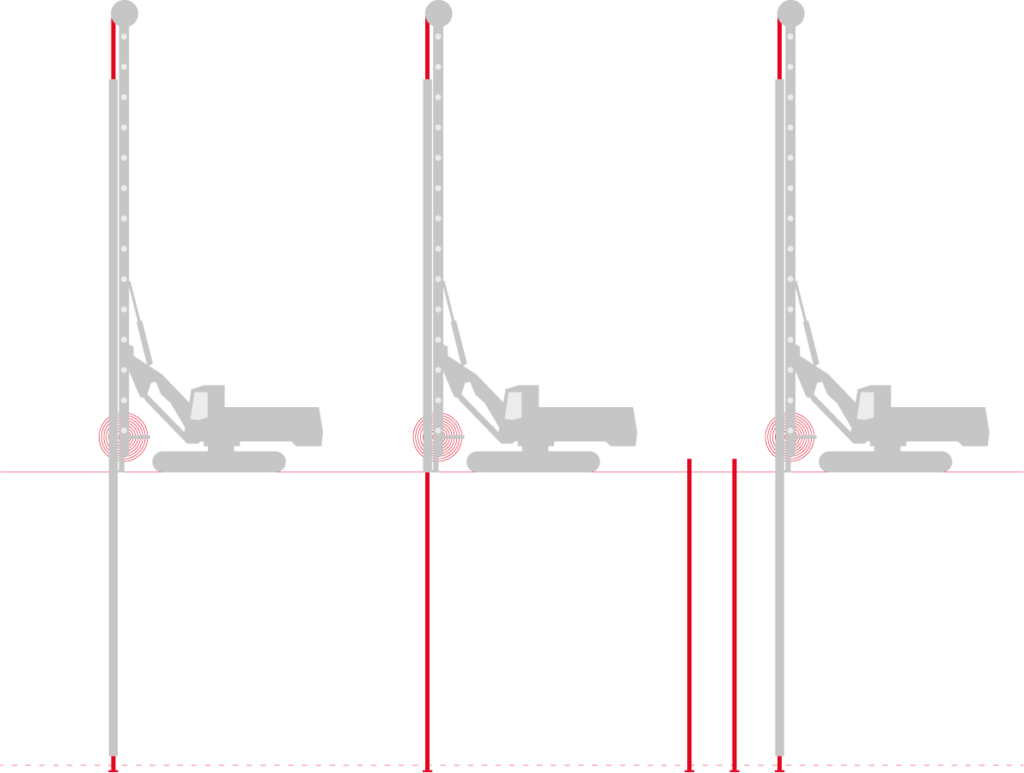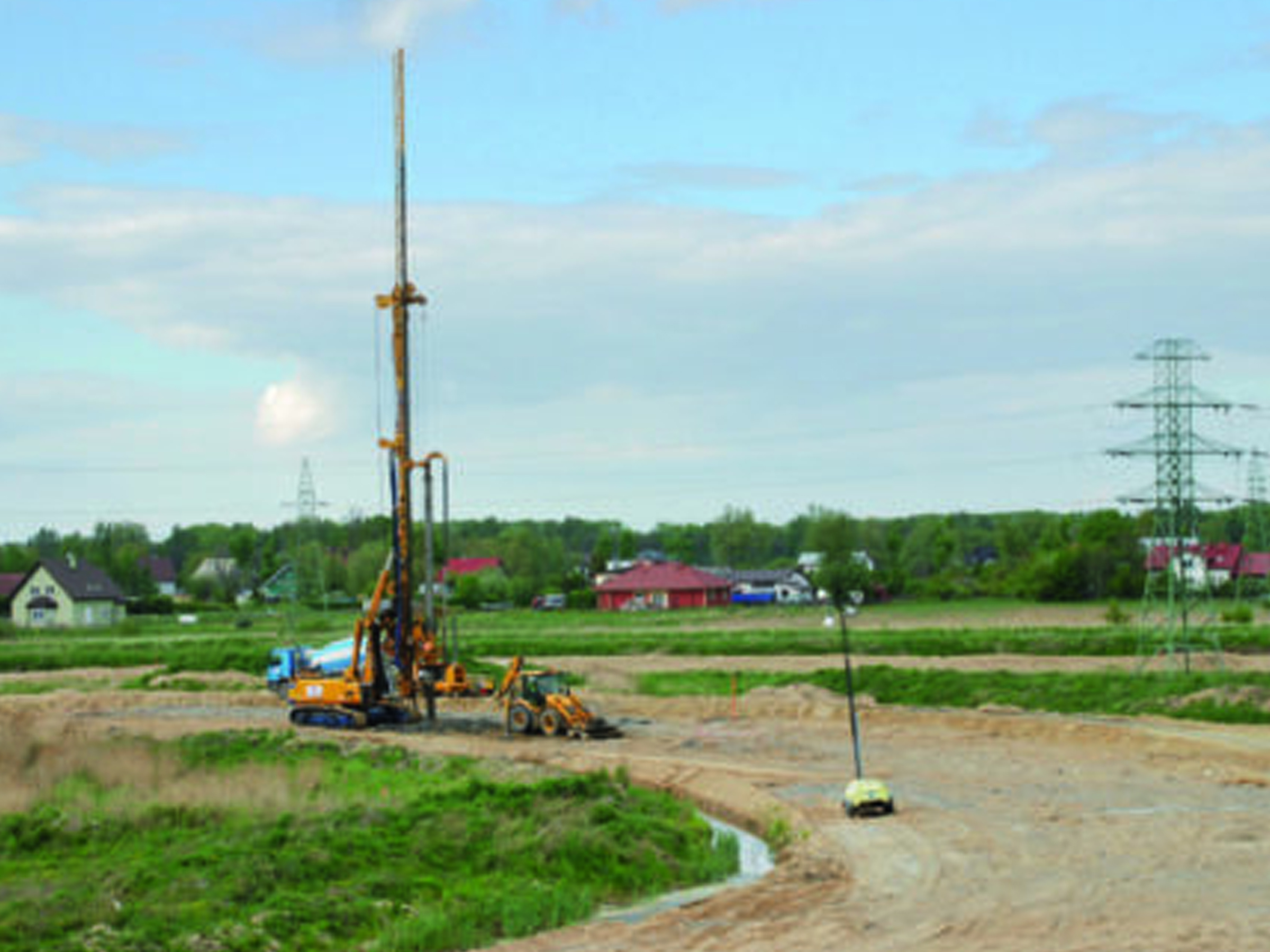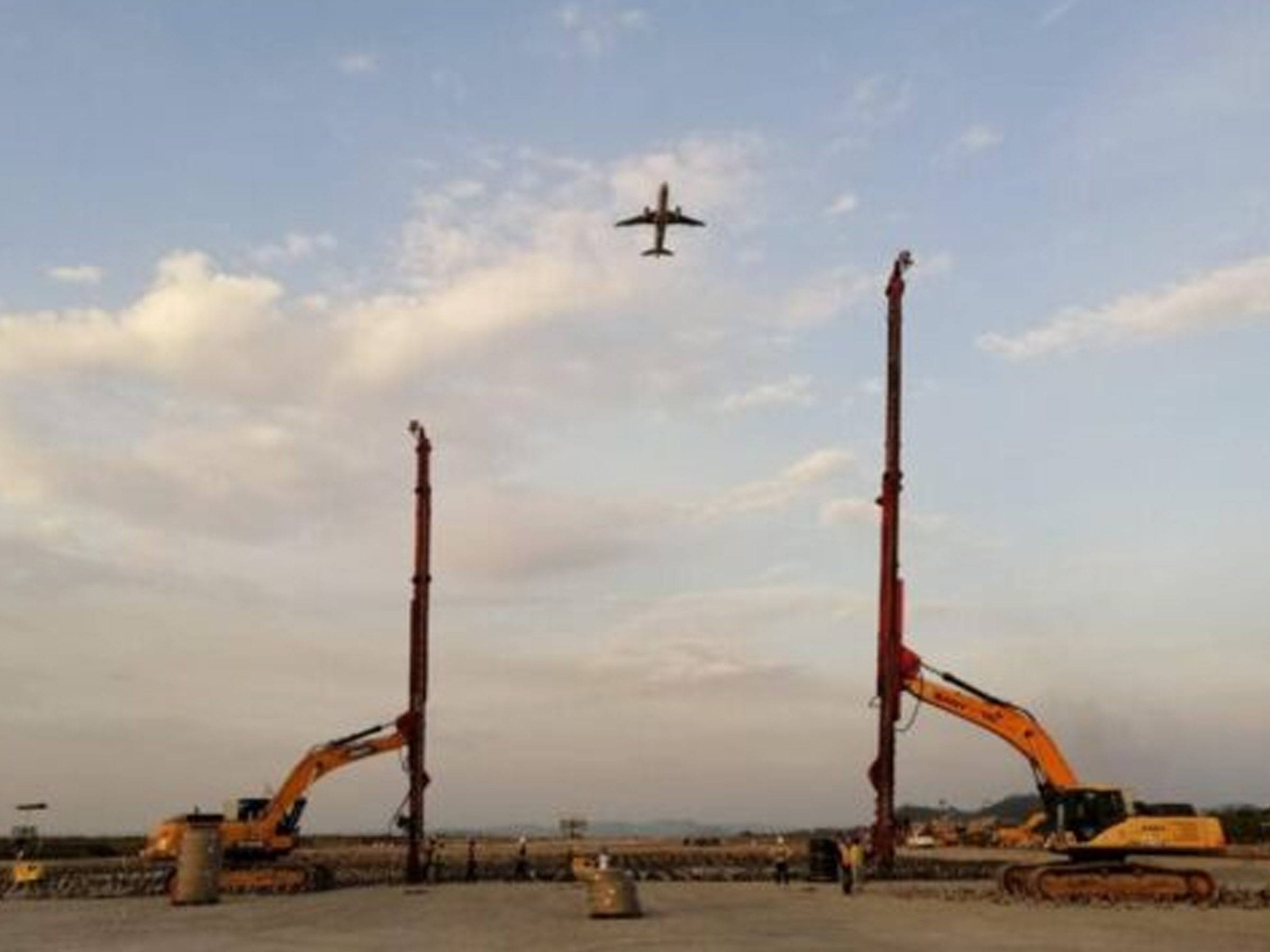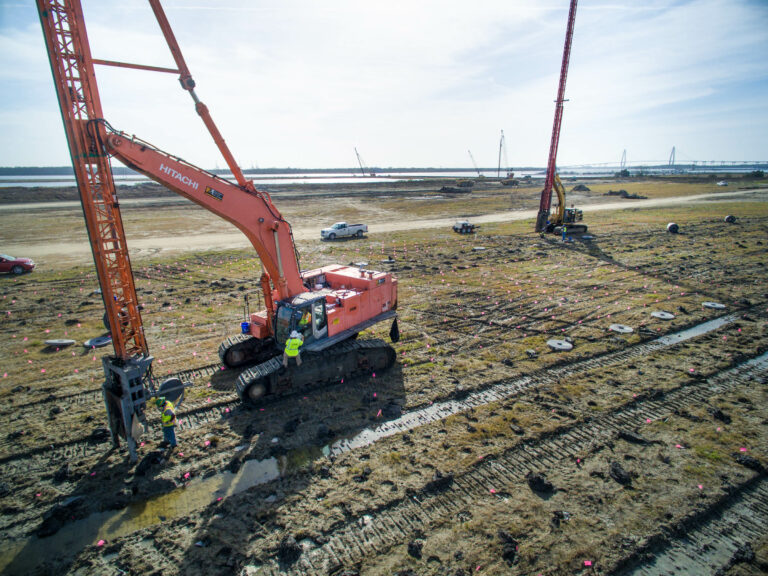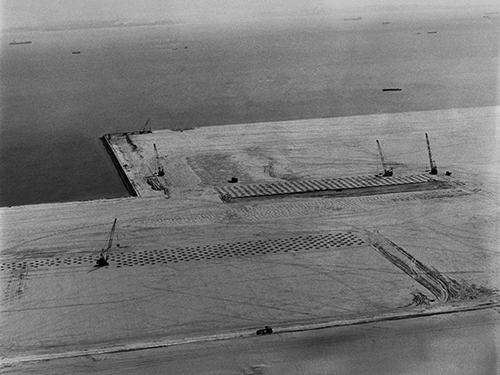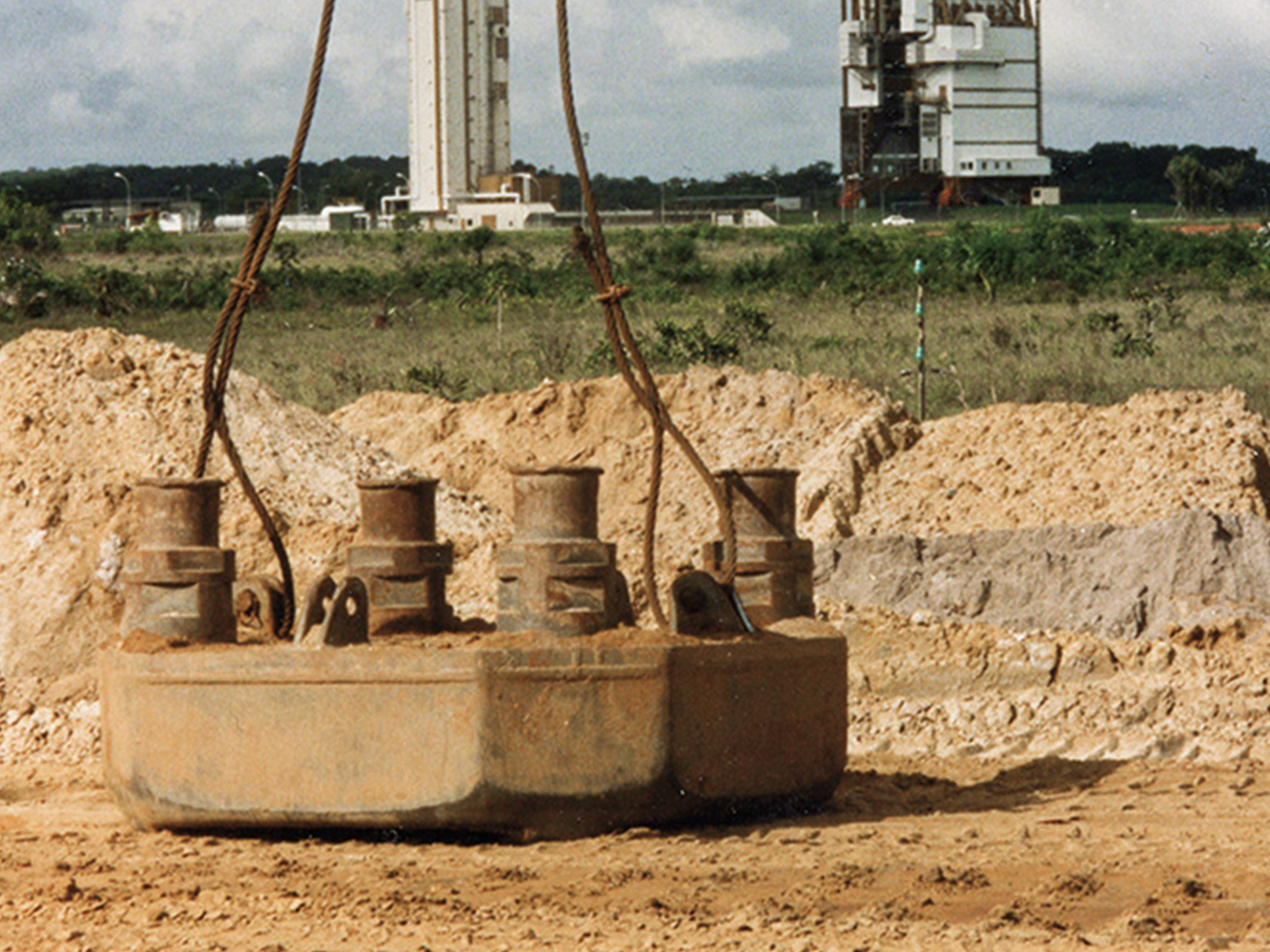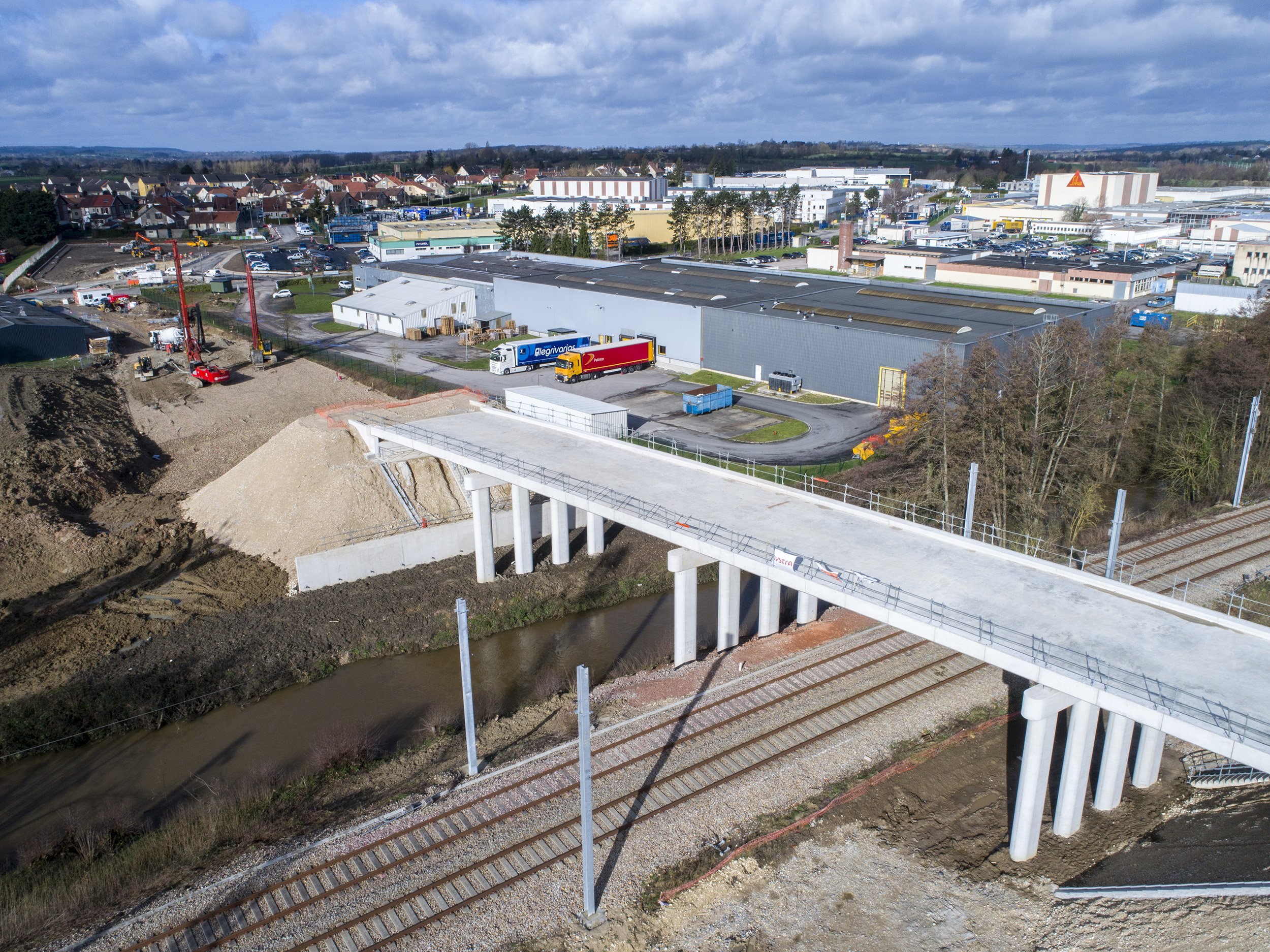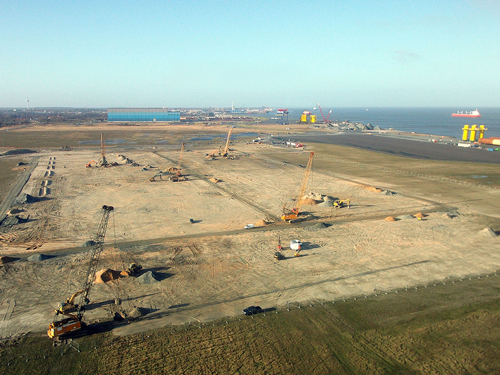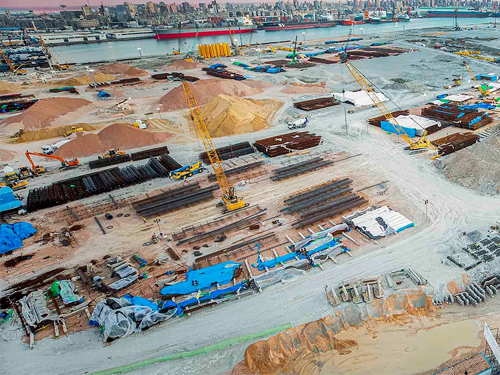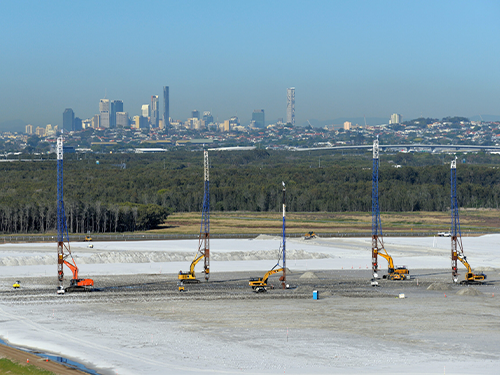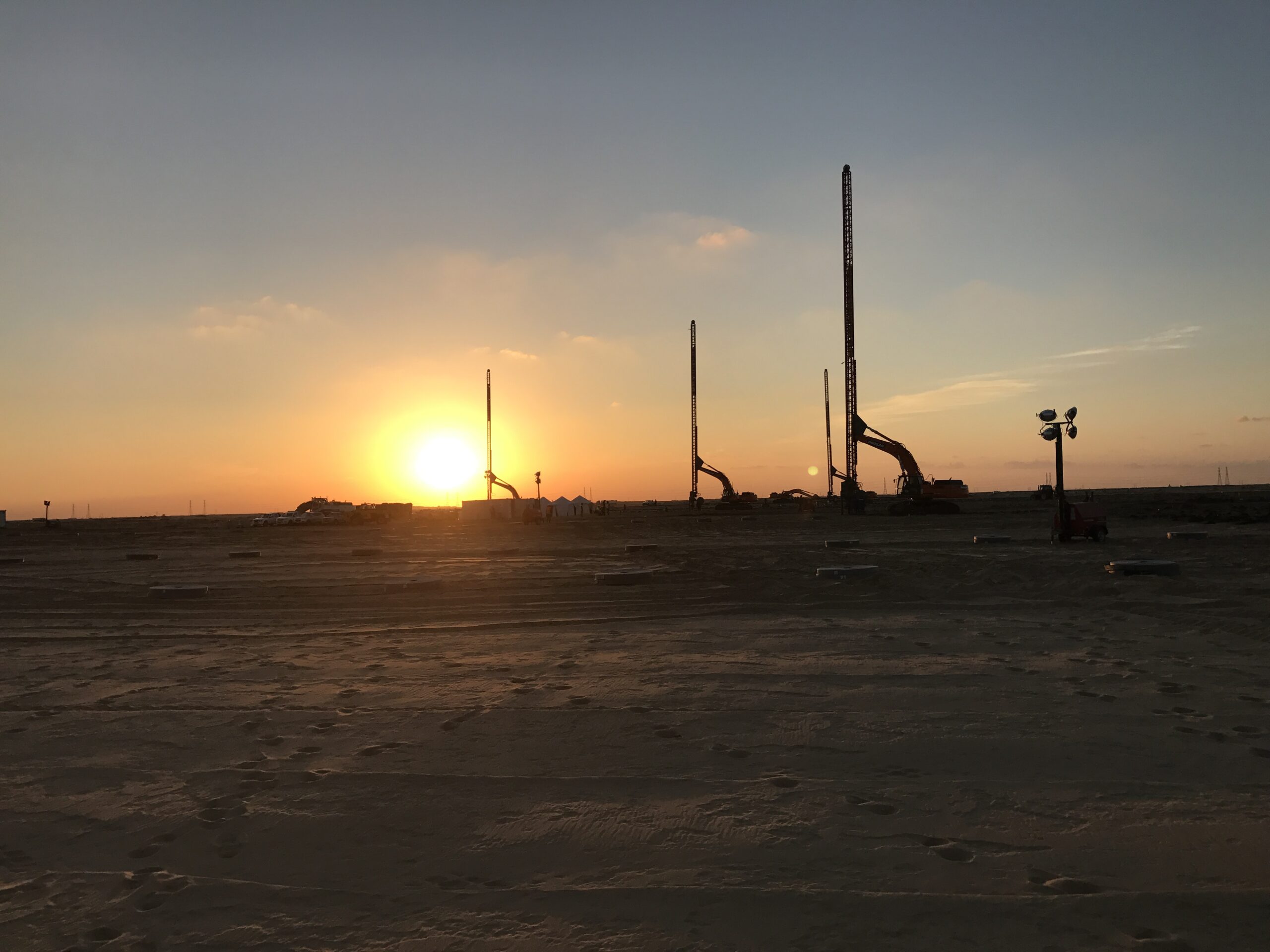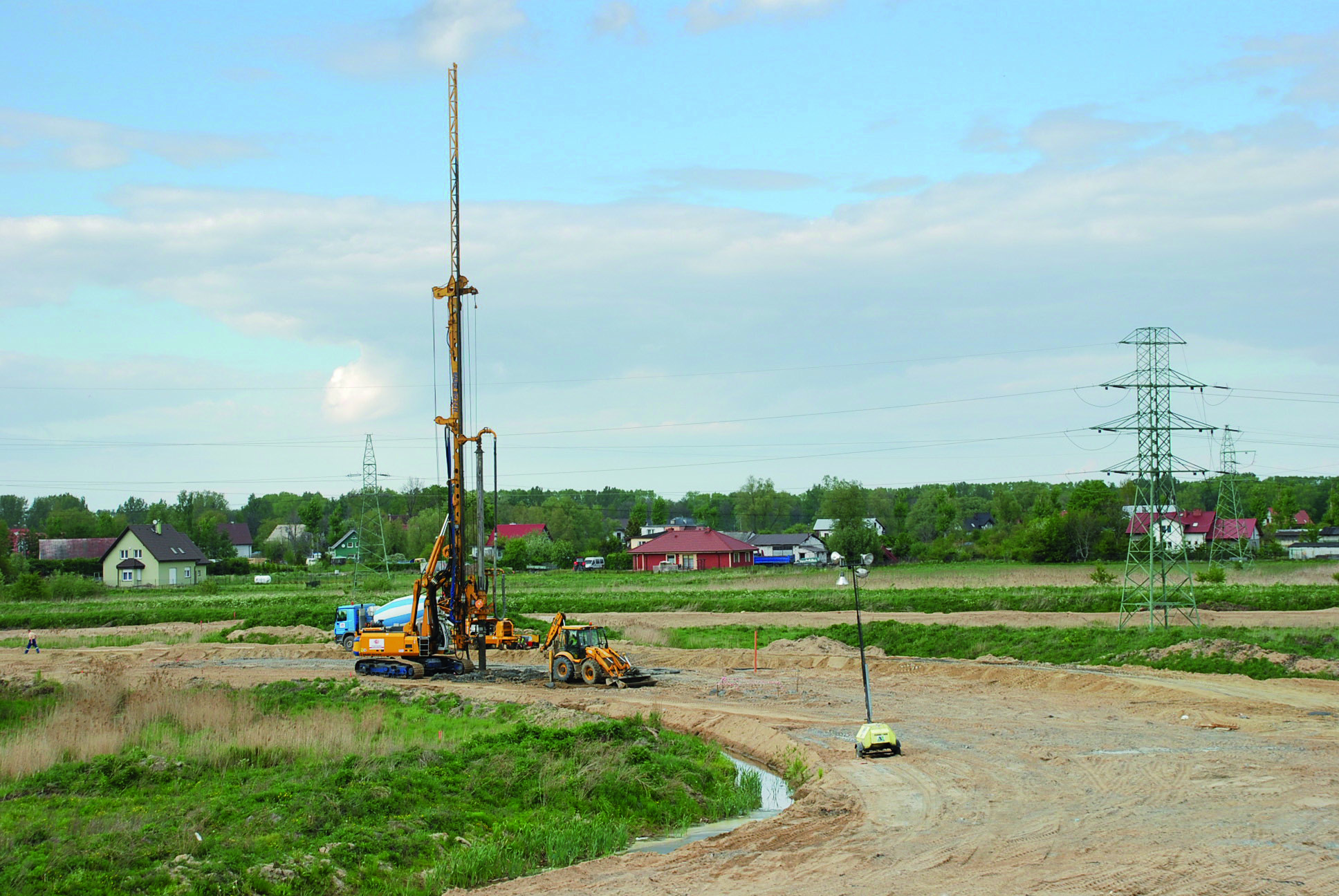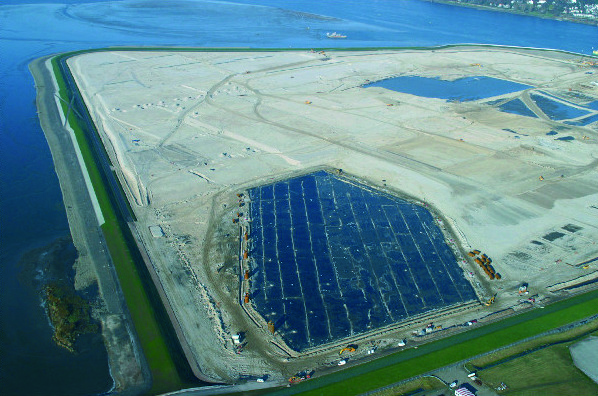Vertical drains, also known as prefabricated vertical drains or wick drains, are made up of a plastic core surrounded by a geotextile that acts as a filter to prevent clogging.

Presentation and key elements
What are vertical drains and why do we use them?
When a load is applied on saturated cohesive compressible soils (clays, silts), the structure can settle for a long period of time (up to 10 to 20 years). Prefabricated vertical drains, also known as wick drains, are a technique which is used to control long term residual settlement in these type of soils within acceptable limits.
Basic principle of vertical drains
Cohesive soils (clayey soils) are generally characterised by having a low permeability. Consolidation of a cohesive soil relies on the ability to evacuate water out of the soil matrix and this process can be very long.
The installation of a network of drains creates a preferred path for the water. The combination of vertical drains with the placement of preloading or a surcharge programme accelerates the consolidation period.
Execution of vertical drains
Vertical drains are made up of a plastic core surrounded by a geotextile that acts as a filter to prevent clogging. There are various types of vertical drains (round and flat) and various sizes. Networks of drains are designed according to the type of ground and the degree of consolidation targeted.
Depending on the ground, static, dynamic or static-dynamic installation methods are employed. The machines used can conventionally install drains up to depths of about 50 meters. The mandrel is attached to a sliding mast, which is attached to the arm of an excavator or a crane.
